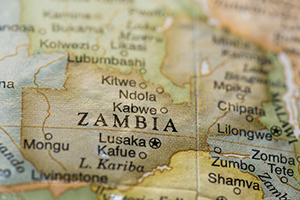In the pilot phase of an ongoing randomized trial reported in The Lancet Oncology, Pinder et al found that thermal ablation and cryotherapy produced similar treatment success rates in Zambian women positive for cervical precancer on visual inspection with acetic acid.
The investigators noted that cryotherapy is standard treatment for cervical precancer in see-and-treat programs in low-income and middle-income countries. However, cryotherapy presents logistical difficulties, including the need for, cost of, and supply chain problems with refrigerant gas, as well as equipment failure. The current pilot study included use of a recently developed, lightweight, portable battery-operated thermal ablator.

Photo credit: Getty
Study Details
The pilot study included 750 women aged 25 years or older seen at routine screen-and-treat clinics in Lusaka, Zambia, who were eligible for ablative therapy. Patients were randomly assigned between August 2017 and January 2019 to receive thermal ablation (n = 250), cryotherapy (n = 250), or large loop excision of the transformation zone (LLETZ; n = 250). The primary endpoint was treatment success, defined as either human papillomavirus (HPV) type-specific clearance among women positive for the same HPV type at baseline or negative visual inspection with acetic acid test at 6-month follow-up if baseline HPV test was negative. Outcomes were assessed in the per-protocol population. Enrollment for the full trial is ongoing.
Key Findings
Among all evaluable patients, treatment success at 6 months was reported in 120 (60%) of 200 patients in the cryotherapy group, 123 (64%) of 192 in the thermal ablation group, and 134 (67%) of 199 in the LLETZ group (overall P = .31).
Among patients who were HPV-positive at baseline, treatment success was reported in 48 (40%) of 121 patients in the cryotherapy group, 44 (42%) of 104 in the thermal ablation group, and 50 (47%) of 106 in the LLETZ group (overall P = .48).
Moderate to severe pain immediately after the procedure was reported by 2% of patients in the cryotherapy group, 2% in the thermal ablation group, and 2% in the LLETZ group. Moderate to severe pain at 2 weeks after the procedure was reported by < 1%, 0%, and < 1%, respectively.
No patients reported any complication requiring medical consultation or hospital admission.
The investigators concluded, “Results from this pilot study preliminarily suggest that thermal ablation has similar treatment success to cryotherapy, without the practical disadvantages of providing cryotherapy in an [low- and/or middle-income country]. However, the study was not powered to establish the similarity between the techniques, and results from the ongoing randomized controlled trial are need to confirm these results.”
Partha Basu, MD, of the Screening Group, Early Detection and Prevention Section, International Agency for Research on Cancer, WHO, Lyon, France, is the corresponding author for The Lancet Oncology article.
Disclosure: The study was funded by the National Institutes of Health. For full disclosures of the study authors, visit thelancet.com.

